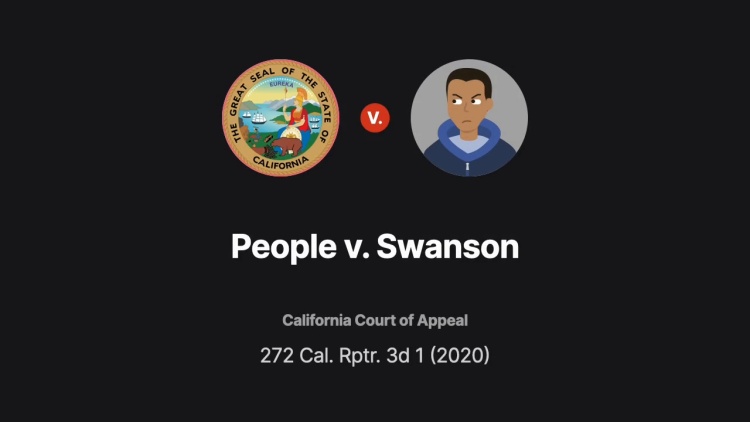People v. Swanson
California Court of Appeal
57 Cal. App. 5th 604, 272 Cal. Rptr. 3d 1 (2020)
- Written by Jamie Milne, JD
Facts
Derrick Swanson (defendant) and Anthony Chapple robbed a gas station at gunpoint. During the robbery, Swanson grabbed Rosa, the pregnant wife of station employee Ruben Garcia, and shoved her to the ground. Garcia tried to stop Swanson, but Chapple threatened to shoot Garcia’s brother. As Swanson and Chapple left, Swanson fired a shot at Garcia and Rosa. Rosa screamed. Garcia grabbed his gun and gave chase, believing Rosa was shot and Swanson and Chapple would return. In an exchange of gunfire, Garcia killed Chapple. Swanson was convicted of first-degree murder based on the provocative-act doctrine, which imposed murder liability if a person committed an act likely to cause death and the victim or a police officer killed someone while reasonably responding. After Swanson’s conviction, California amended its laws regarding the felony-murder rule and the natural-and-probable-consequences doctrine, limiting liability and creating an avenue for persons previously convicted under those doctrines to have their sentences reviewed. Swanson filed a writ of habeas corpus seeking review, claiming that the provocative-act doctrine was an offshoot of the natural-and-probable-consequences doctrine. Without appointing counsel, the trial court dismissed Swanson’s petition, finding the provocative-act doctrine distinct. Swanson appealed.
Rule of Law
Issue
Holding and Reasoning (Chaney, J.)
What to do next…
Here's why 899,000 law students have relied on our case briefs:
- Written by law professors and practitioners, not other law students. 47,000 briefs, keyed to 994 casebooks. Top-notch customer support.
- The right amount of information, includes the facts, issues, rule of law, holding and reasoning, and any concurrences and dissents.
- Access in your classes, works on your mobile and tablet. Massive library of related video lessons and high quality multiple-choice questions.
- Easy to use, uniform format for every case brief. Written in plain English, not in legalese. Our briefs summarize and simplify; they don’t just repeat the court’s language.








